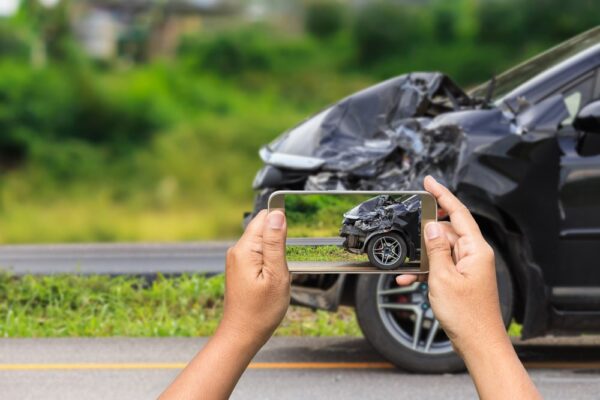You must provide documentation of your losses to get total compensation for all your accident-related costs. It includes medical bills and records, repair estimates, and other expenses.
Physical evidence at the crash scene, such as skid marks and vehicle damage, is also necessary. Eyewitness statements can prove crucial, as well.
Take Photos
When you are at the accident scene, take pictures of your vehicle’s damages, any visible injuries to yourself and anyone else in the car, environmental and weather conditions, skid marks, traffic signals, and other relevant details. Take these photos immediately, as evidence can be destroyed or distorted over time.
To accurately represent the collision, capture images of the destruction or item from various viewpoints and ranges. It will also ensure that every crucial detail is noticed, such as a broken windshield that could suggest the driver was looking down at their phone instead of paying attention to the road. Even the color of a damaged car door can be significant evidence, as can the smear or blemish that indicates a collision with another object. Also, photograph any damage to the other vehicle involved in the crash.
Exchange Information
While you should always prioritize your health and the health of others involved in a crash, there is often essential information that should be collected at the accident scene if it’s safe and you are physically able.
Get the name, contact information, insurance policy numbers, and license plate number for every driver and vehicle owner. If there are any witnesses, get their names and contact information. Write down a description of the crash while it’s fresh in your mind, including how you believe it occurred.
Do not under any circumstances admit fault or make any statements that may be used against you later at the scene. Many drivers flee the scene after a car accident, and it can be challenging to find them and bring them to court. However, an Indianapolis car accident lawyer is skilled at uncovering surveillance footage and other tactics to help you locate the responsible party for a fair recovery. Also, don’t forget to write down the date and time of the accident.
Gather Witnesses
Finding and speaking with any eyewitnesses you can is always a good idea. Witness statements provide essential evidence to your attorney about what happened at the accident scene. Individuals can either validate or challenge the comments made by other individuals who were present during the occurrence of the accident.
Ideally, you can ask witnesses for written statements or affidavits right at the accident scene. It will be more beneficial to your case than attempting to get a piece of information from the witness later.
Witnesses are helpful because they can objectively account for the car accident. They can detail how the vehicles were positioned, road conditions, and any visible damage to those vehicles. You must ensure the witnesses you contact don’t have any financial stake in your claim. Insurance providers often find testimony from neutral third parties to be more credible than that of people who are affiliated with either the victim or at-fault party.
Contact an Attorney
The more evidence you have, the easier it will be to build a strong case. Having medical bills and treatment records will also help you prove the extent of your injuries.
Speaking with witnesses to get their names and contact information is best. Eyewitness testimony can be compelling in car accident cases.
A police officer’s report is another piece of significant evidence. This document will include the officer’s assessment of fault and can be an invaluable tool when pursuing compensation.
Even if you are feeling fine or your vehicle looks okay, seeking medical attention as soon as possible is crucial. Sometimes, the symptoms of some injuries (like whiplash) don’t show up until hours or even days after an accident occurs. It would be best to keep a journal of your pain and injuries.

